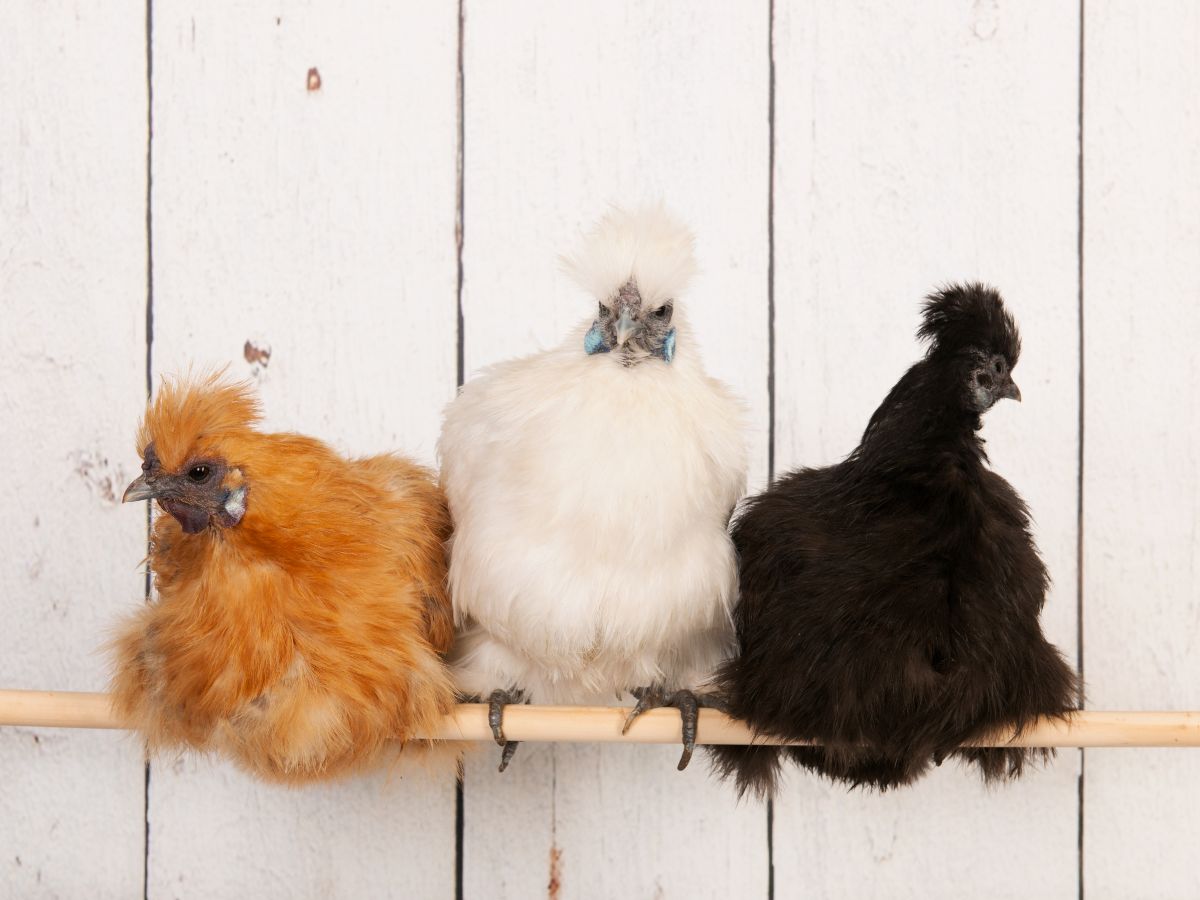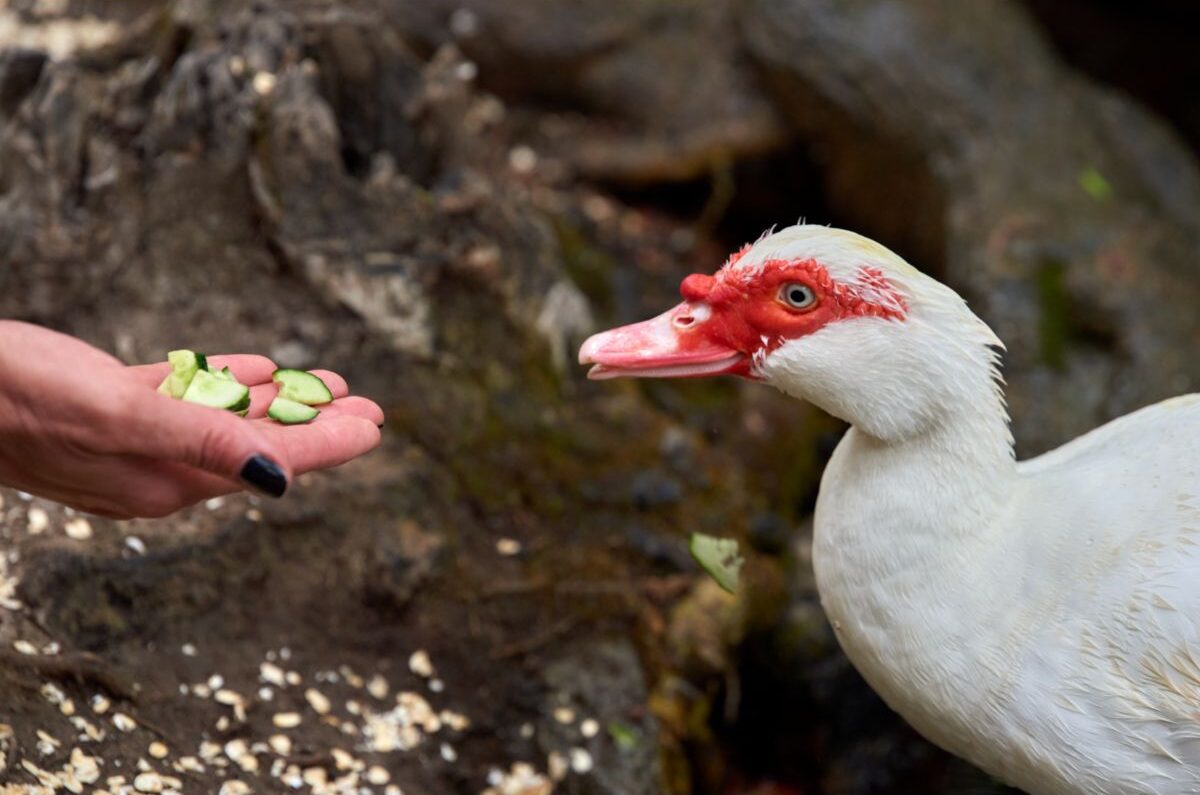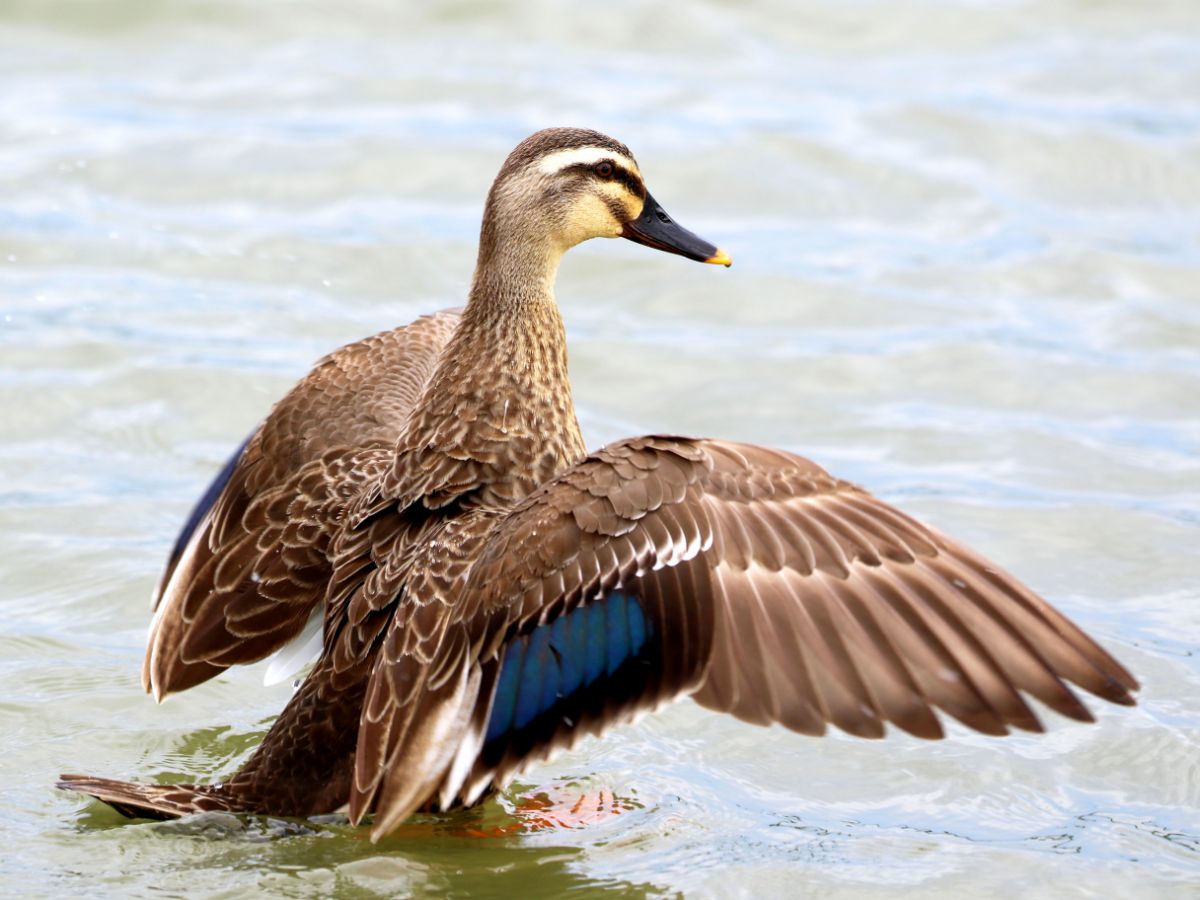Silkies are among the most popular chickens in the world, and they are certainly one of the most unique breeds. There are loads of weird and wonderful facts about these fluffy little birds, from their blue earlobes to their black skin and bones!
Silkie chickens are famous for their friendly temperament. They make wonderful pets. As an ornamental bantam breed, Silkie hens are not prolific egg layers. They only produce about 100 to 120 small eggs annually. Hens make excellent mothers because they are very prone to broodiness.
Keeping Silkies is an absolute pleasure. They are perfect for first-time chicken owners and for families with kids. If you want to learn more about Silkies and how to care for them, you have come to the right place!
Contents
Silkie Chicken Breed Profile
Silkie chicken is an old, well-established breed with many charming characteristics:
| Beginner friendly | yes |
| Type of use | Ornamental chickens with good brooding characteristics |
| Egg production | 80 eggs per year, maximum 100 |
| Egg size | 40g / 1.41 oz |
| Weight | Rooster 1,0 – 1,7 kg/ 2,2 – 3,74 lb – Hen 1,0 – 1,4 kg/ 2,2 – 3,08 lb |
| Laying eggs in winter? | yes |
| Color | White, Porcelain, Gold, Grey, Blue, Black, Red, Lavender, Splash, Partridge, Cuckoo |
| Personality | calm |
| Life span | 7 to 9 years |
| Broodiness | high, excellent clucks |
| Country of origin | East Asia |
Physical Characteristics
Silkies have black to dark blue skin. Their legs and feet are grey. Their melanism is not just skin-deep. These chickens have dark grey bones and meat!
Silkie chickens have bright turquoise earlobes. They have small walnut combs and wattles that are a dark mulberry color.
Silkies have five toes, rather than just three like other chicken breeds. This is caused by a genetic mutation. Silkies’ plumage covers their feet, adding to their adorable appearance.
| Feathered Feet | yes |
| Ring size | Rooster 16 – Hen 15 |
| Special characteristic | can’t fly |
Plumage
Their most notable feature is their fluffy plumage that looks almost like mammal fur. In fact, when these chickens were first introduced in Europe, they were sold as a cross between a bunny and a chicken!
Their feathers are different in structure from other chicken breeds. They lack barbicels, so the feathers have a very fine texture like down. Because the feathers do not hold together, Silkies cannot fly.
You get bearded and non-bearded Silkies. The bearded ones have extra fluff around their head that covers their earlobes.
Color
As an ornamental showing breed, Silkies have been bred to come in a range of different colors:
- White
- Porcelain
- Gold
- Grey
- Blue
- Black
- Red
- Lavender
- Splash (white with silvery grey speckles)
- Partridge (black and reddish brown)
- Cuckoo (black and white barred)
Size
Silkies are a true bantam breed, so they are much smaller than regular chickens. Silkie roosters only reach between 22 and 35 ounces, and hens only grow to 18 to 32 ounces.
Temperament
Silkies have sweet, friendly personalities and make great pets, especially for kids. They love interacting with humans and are very tolerant of being picked up. Once they bond with you, they will follow you around and actively seek out cuddles!
They are very calm, docile, quiet chickens – perfect for keeping in the backyard in urban areas. They are unlikely to irritate your neighbors.
Silkies are well-suited to living in confinement and can even be kept indoors. They are great for people who do not have a lot of backyard space.
When they are allowed to free-range, Silkies are excellent foragers.
Lifespan
Silkies have a relatively long lifespan for a chicken. On average, Silkies live for between 7 and 9 years. If you take good care of them, they can live longer than this.
The Guinness World Record for the oldest hen went to a Silkie named Matilda. She made it to the ripe old age of 14!
Purpose
| Egg production | 80 to 100 eggs per year |
| Egg color | Light brown |
| Egg size | 40g / 1.41 oz |
Silkie chickens are mainly kept as ornamental birds. They are a popular showing breed, and many people keep them just for their aesthetic appeal.
Because of their lovely temperament, Silkies are often kept as pets and companions for people who are allergic to dogs and cats.
Silkie hens make fantastic mothers and are prone to broodiness, so they are often used for hatching out eggs. They do not mind what type of eggs you give them and will happily raise ducklings, goslings, quail, and exotic fowl.
People do not generally keep Silkie hens for their eggs. They only lay 100 to 200 eggs annually, and the eggs are very small, only weighing about 1.5 ounces. Eggs are white or cream in color.
Silkies do not grow very large, so they are not generally considered a meat breed. However, in Asian cuisines, Silkie meat is considered a delicacy. Because of the dark, almost black meat, it is thought to have medicinal properties.
Hardiness
Silkie chickens do not cope well in extreme heat, but they are very cold-hardy, thanks to their fluffy down coats. However, their feathers are not waterproof like other chickens, so they need shelter from wind and rain.
If you live in a place where it is often cold and wet, keeping Silkies may not be the best choice.

How To Care For Silkie Chicken
Silkie chickens are easy to care for and make low-maintenance pets. However, there are a couple of things to be aware of when keeping Silkies.
Housing
Silkies need a well-constructed, secure coop to keep them safe from predators and the elements. It is important for them to stay warm and dry in stormy weather and to have some shade to escape from the baking sun.
Because Silkies are not great flyers, you should put their roosts lower down than for other chickens. Provide ample nest boxes for these broody birds, as they love sitting on their eggs.
These chickens should have a secure run or a fenced-in area for them to enjoy some time outdoors. Give Silkies as much room as possible to run around and forage.
In their coop and run, there should be a thick layer of wood chips or shavings to prevent muddy conditions. Because of their feathered feet, they can easily get caked in mud.
Feed
Silkies can be given a complete and balanced feed. Because of their small size, they eat a bit less than regular-sized chickens.
You should give Silkies about a quarter pound of feed per bird per day. If you consistently find leftover feed at the end of the day, feed them a little less than this.
Like all chickens, Silkies prefer to eat many small meals throughout the day. Feed them two to four times a day. If this is impractical for you, you can also simply free-feed them. They will not overeat.
Some people find that pelleted feed is difficult for Silkies to eat because their beaks are so small. Therefore, they are often given crumble feed.
Provide them with grit*, as they need it to digest their food. Hens should also be given calcium supplements, like crushed oyster shells, to help them with their egg-laying.
Silkies will love it if you provide them with some green vegetation, grains, and seeds to snack on. You can also feed Silkies fruits, vegetables, and certain kitchen scraps as treats.
Grooming
Silkies’ luscious coats are deceptive because it looks like they need grooming. If they have access to dust baths, they do not need extra grooming.
If your pet Silkie’s feathers get muddy or dirty, you can wipe the muck away with a damp cloth and pat them dry. Gently towel dry them if they get wet.
If their feet get caked in mud, you need to wash them because mud-encrusted feet can lead to foot infections.
It is a good idea to pick Silkie chickens up regularly and check them for mites and lice. External parasites are attracted to their fluffy plumage.
Flock Mates
Silkies’ gentle, trusting personalities mean that they get along with other chicken breeds very well. However, they can easily get bullied by larger, more dominant chickens.
If you have a mixed flock, keep an eye on your Silkies to make sure they do not get harassed by their flock mates.
Breeds that are non-aggressive and well-suited to keeping with Silkies are Buff Orpington and Speckled Sussex.
Common Health Issues With Silkies
Silkies do not have any health problems that are unique to the breed. They are prone to the same health issues as other chickens.
You should regularly inspect your Silkies for the following:
- External parasites – mites, lice, fleas
- Internal parasites – worms
- Marek’s disease
Silkies that take dust baths regularly are less susceptible to external parasites. Sprinkle some diatomaceous earth in the hollows where they dust bath to further prevent mites, fleas, and lice.
If you do see lice or mites on your Silkies, you must deep clean their coop, and the birds should all be dusted with diatomaceous earth* once a week for a month (even the ones that do not have visible parasites).
Silkies should be given garlic and a little apple cider vinegar in their drinking water to prevent internal parasites like worms. This will bolster their natural ability to fight off these parasites.
When Silkies have worms, you may see them in the birds’ droppings. Other symptoms of a worm infestation are diarrhea, pale-looking combs and wattles, lethargy, and a drop in egg production.
Marek’s disease is a terrible illness that causes tumors and swelling of the brain and nervous system. Eventually, it paralyzes chickens, and they starve to death. Day-old chicks are usually vaccinated against Marek’s because there is no treatment for the disease.

What Is It Like Keeping Silkie Chickens?
Silkies are delightful to have around your garden. People who have kept Silkies rave about the many advantages of keeping this breed. However, there are also some disadvantages to Silkies that one should be aware of.
Advantages Of Silkie Chickens
- They are low-maintenance pets that do not require much special attention.
- Silkies look beautiful and come in a wide range of colors and patterns.
- They enjoy human interaction, unlike most other chickens.
- Silkies are easy to handle and do not mind being picked up or cuddled.
- Silkies are gentle and especially great with children.
- Their fluffy feathers feel lovely to touch.
- They do not fly, so you can allow them to free-range in the garden without worrying about escapees.
- Silkie hens make fantastic mothers and can be used to hatch out other birds’ eggs.
Disadvantages of Silkie Chickens
- They struggle in cold, wet climates because their plumage is not waterproof.
- Silkie hens are not great egg-layers because they frequently go broody.
- The eggs are very small.
- Silkies do not grow large, so they do not provide much meat.
- They can easily be bullied by larger, more aggressive chickens.
Are Silkie Chickens Easy To Get?
Silkies are a widely popular breed, so they are very easy to come by. You can buy Silkie eggs or day-old chicks to raise yourself, but by far, the easiest method of growing a flock of Silkies is to get a hen and let her sit on the eggs.
Are Silkies Expensive?
Silkies are a common breed, so they are not very expensive. However, pedigree Silkies used for exhibition purposes are a lot pricier.
Generally, unsexed Silkie chicks cost around $5 each. Sexed chicks cost slightly more because it is extremely difficult to distinguish males from females when they are young.
You can expect to pay about $20 for a mature Silkie hen and $15 for a rooster. White and black Silkies are the most common and the cheapest. You will pay more for rare colors, like blue, red, and splash.
Where Do Silkie Chickens Come From?
Silkies originate from China and Southeast Asia. The famous 13th-century Venetian explorer, Marco Polo, gave the earliest written account of Silkie chickens. He called them furry chickens.
The breed made its way to Europe via the Silk Route. This must have happened before the 15th century because in 1598, the Italian naturalist, Ulisse Aldrovandi, wrote about chickens with wool and hair similar to that of a black cat.
Western myths about Silkie chickens quickly spread. Early Dutch breeders marketed the breed as a cross between a chicken and a rabbit.
Eventually, Silkies made their way to North America. The American Poultry Association officially recognized Silkies as a breed in 1874. They were common attractions at traveling sideshows, where they were exhibited as a bird with mammalian fur.
Conclusion
If you want chickens that are stunning to look at, lovely to hold, and easy to manage, Silkies are an excellent choice. Even though their plumage looks fancy, they do not require more grooming or maintenance than other chicken breeds. This family-friendly breed is great for small backyards, and they can even be kept indoors.




